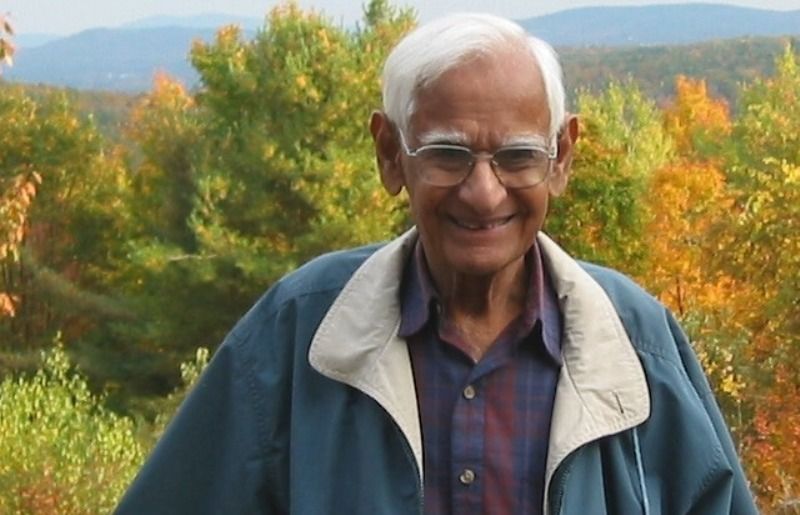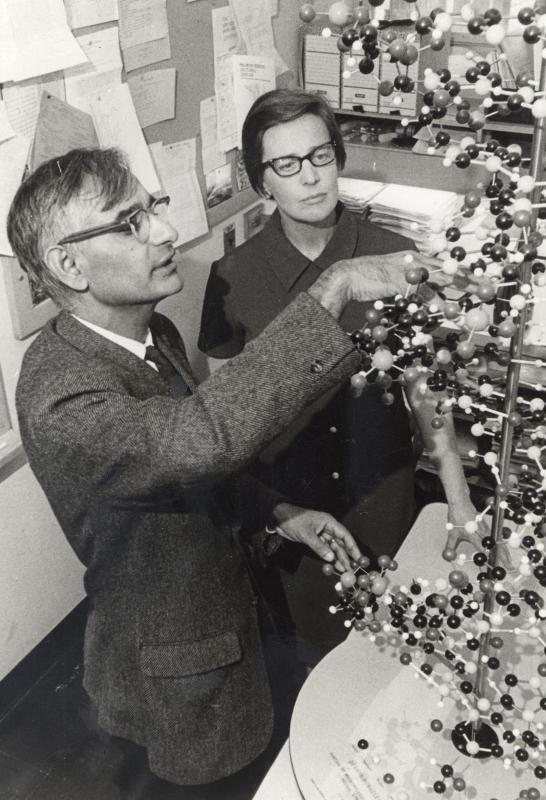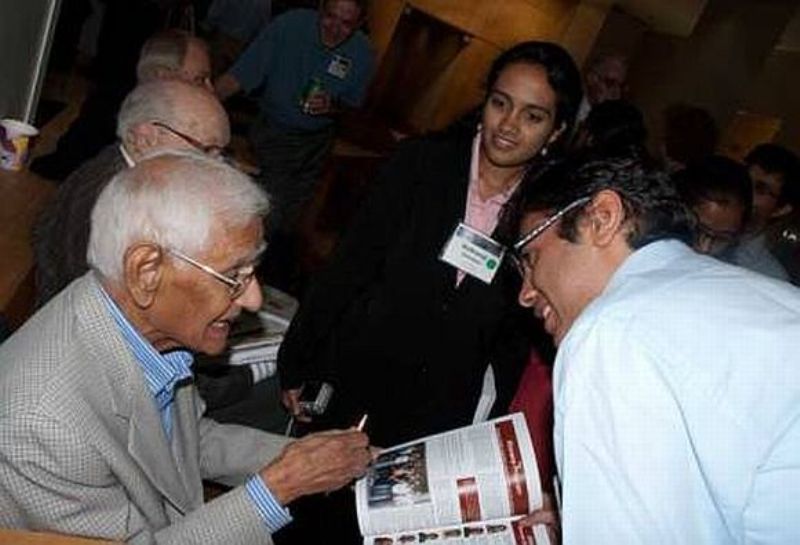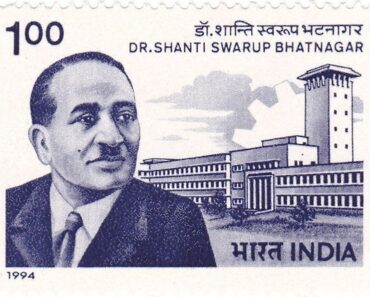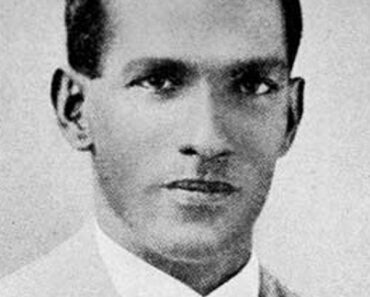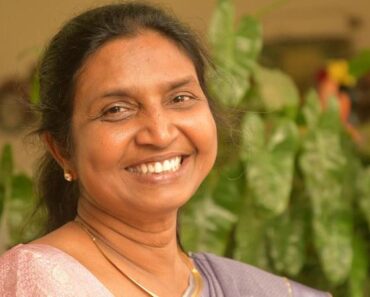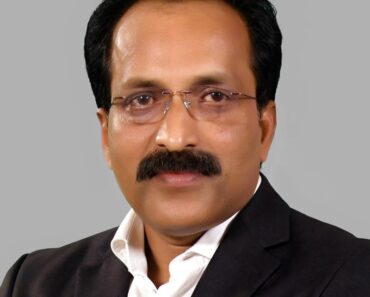Har Gobind Khorana (1922-2011) was an Indian-American biochemist known for his work in decoding the genetic code and synthesizing DNA. During his tenure at the University of Wisconsin–Madison, he was awarded the Nobel Prize in Physiology or Medicine in 1968 along with Marshall Warren Nirenberg and Robert William Holley for the work in the research field, which showed how the nucleotides in nucleic acid, which carry the genetic code of the cell, control the protein synthesis in the cell. Khorana died on 9 November 2011 in Concord, Massachusetts.
Wiki/Biography
Har Gobind Khorana was born on Monday, 9 January 1922 ( 89 years; at the time of death) in Raipur, Punjab, British India. His Zodiac sign is Capricorn. Although his family was very poor, it was the only literate family in the village of over 100 people. He studied under a tree during his initial four years of education, which was s also the only school in the village effectively. Khorana completed his primary education at D.A.V. (Dayanand Anglo-Vedic) High School in Multan. With the help of scholarships, he took admission in the Punjab University in Lahore, where he completed a bachelor’s degree in 1943, and a master’s degree in chemistry in 1945. Khorana then moved to England and enrolled in the University of Liverpool with the help of a Government of India Fellowship, where he completed his PhD in Organic Chemistry in 1948 guided by Roger J. S. Beer. In the next year, he pursued his Postdoctoral with Professor Vladimir Prelog at ETH Zurich in Switzerland.
Family & Caste
Parents & Siblings
Ganpat Rai Khorana and Krishna Devi. He was the youngest among five children, one daughter and four sons, of his parents. His father was a patwari, a village registrar in the British Indian government. Khorana’s father educated all his five children.
Wife & Children
Har Gobind Khorana got married to Esther Elizabeth Sibler in 1952. His wife was of Swiss origin, and they met in Switzerland. The couple went on to have three children, one son, and two daughters: Julia Elizabeth (born 4 May 1953), Emily Anne (born 18 October 1954), and Dave Roy (born 26 July 1958).
Khorana later wrote about Esther in his biography:
Esther brought a consistent sense of purpose in my life at a time when, after six years’ absence from the country of my birth, I felt out of place everywhere and at home nowhere.”
Signature
Nationality
He accepted the US citizenship in 1966.
Career
Initial Research
After his postdoctoral research, he went to the Swiss Federal Institute of Technology (ETH) in Zurich and worked for 11 months on alkaloid chemistry with Vladimir Prelog during 1948-49. Later, he returned to India, and after a brief stay in Delhi in 1949, he decided to move back to England to work with George Wallace Kenner and Alexander Robertus Todd. He stayed in Cambridge from 1950 to 1952 and worked on peptides and nucleotides. In 1952, he got a job offer from Dr. Gordon M. Shrum of British Columbia, and he shifted to Vancouver. He worked on “Nucleic acids and synthesis of many important biomolecules’ in British Columbia. Mr Uttam Rajbhandary, MIT’s Lester Wolfe Professor of Molecular Biology and a colleague once recalled how Khorana accepted the position. He said,
Gobind was so excited that he was going to start a lab of his own. He looked at the map of Canada,
saw where Vancouver was for the first time, and off he went.”
In 1960, Khorana accepted the role of co-director of the University of Wisconsin–Madison.
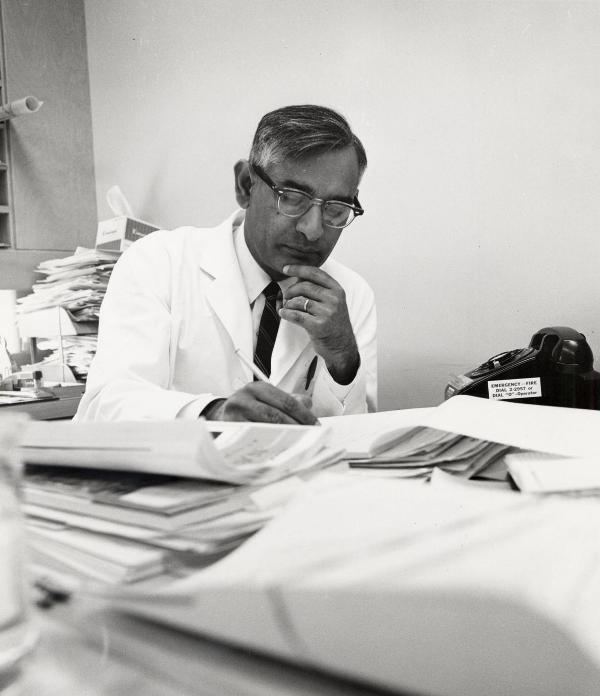
Professor Har Gobind Khorana, who taught biochemistry at the University of Wisconsin-Madison from 1960 to 1970, sits at a desk full of papers
Work on Genetic Code – Nobel Prize
During his time at the University of Wisconsin–Madison, Khorana started focusing on genetics, particularly decrypting the genetic code, and he helped decipher the mechanisms by which RNA codes for the synthesis of proteins. This work earned him the Nobel Prize in 1968, which he shared with Robert W. Holley of Cornell University and Marshall W. Nirenberg of the National Institutes of Health.

(From left) Har Gobind Khorana, Robert W Holley, Luis W Alvarez, Marshall W Nirenberg, Lars Onsager and Yasunari Kawabata at the Nobel Prize ceremony in Stockholm in 1968
Professor
He accepted the role of professor of Biochemistry in 1962 and was named Conrad A. Elvehjem Professor of Life Sciences in 1964. Khorana became the Alfred P. Sloan Professor of Biology and Chemistry when he joined the Massachusetts Institute of Technology in 1970. He retired from the Massachusetts Institute of Technology in 2007.
Solving the genetic code
At the University of Wisconsin-Madison, Khorana synthesized how cells read the language of RNA written in structures represented by the letters A, C, U, and G, by Using enzymes to create sequences of these letters. He arranged them into defined patterns, and he, along with other scientists, discovered that the genetic code comprised 64 three-letter “words,” known as codons, which act as an instructor for arranging amino acids, the primary units of proteins, for example, the “UAA” codon signals the cellular machinery to stop adding to the synthesis of a particular protein, while the “GGT” codon signals the synthesis of the amino acid glycine. These findings produced significant results in protein synthesis.
Contribution to Biotechnology
Khorana discovered a method to make a synthetic gene and then place it in a living bacterium. The tiny engineered organism produced great results, and it helped the biotechnology sector and led the way for scientists looking to control life at its most basic levels, which included modifying genomes using the CRISPR/Cas9 system.
A Great Mentor
Khorana was always very keen on mentoring young scientists. His daughter Julia Khorana once talked about his interaction with young scientists and said,
After he retired, students would come to visit and he loved to talk to them about the work they were doing. He was very loyal to them, and they were very loyal to him, too.”
Shiladitya DasSarma, professor of microbiology and immunology at the University of Maryland School of Medicine, once talked about Khorana’s dedication to mentor budding scientists and said,
I have fond memories of him from the many group meetings that he had nearly every day of the week and how he was engaged with the details of each of his students and post docs’ research,” DasSarma said. “I felt privileged and honoured to be among the select group of graduate students in his group. I strongly believe he never lost his love of research and scientific inquiry.”
Positions Held
- Elected member of the United States National Academy of Sciences in 1966
- Member of the American Academy of Arts and Sciences (AAA&S) in 1967
- Member of the American Philosophical Society (APS) in 1973
Awards, Honours, Achievements
- The Nobel Prize in Physiology or Medicine in 1968
- Padma Vibhushan in 1969
- Foreign member of the Royal Society in 1978
- Louisa Gross Horwitz Prize from Columbia University in 1969
- The Lasker Foundation Award for Basic Medical Research in 1969
- The Golden Plate Award of the American Academy of Achievement in 1971
- The Willard Gibbs Medal of the Chicago section of the American Chemical Society in 1974
- The Gairdner Foundation Annual Award in 1980
- The Paul Kayser International Award of Merit in Retina Research in 1987
Khorana Program
The Khorana Scholar Exchange Program was started in 2007. The Programme was initiated to create an atmosphere and enable Indian and US university students to work and study together with resources and intelligence being shared from both nations. The Program is supported by the Government of India’s Department of Biotechnology, the Indo-US Science and Technology Forum, and WINStep Forward.
Racism
According to his daughter Julia, he was often mocked as “Paki” by white residents in both the UK and Canada. She also said that in the United States, their mixed-race family did not dare travel together in the South. He was often ignored by authors and interviewers, where even less prominent white figures were given their due. He was also expected to work more than his white colleagues and was paid less.
Death
Khorana died on 9 November 2011 in Concord, Massachusetts, at the age of 89. His daughter Emily Anne and his wife, Esther, died earlier. Khorana was survived by his son, Dave, and daughter Julia. According to his friend and colleague Raj Bhandary, even three days before Khorana died, they talked about glucose and the brain. Bhandary once said,
I was by his hospital bed and we talked about glucose and the brain.”
Facts/Trivia
- Har Gobind Khorana loved listening to Western classical music, which was the result of the influence of his wife.
- Har Gobind Khorana was very passionate about nature. His daughter Julia once said,
He loved trees and sometimes would bring flowers that he loved.”
- Har Gobind Khorana was known as the Father of Artificial DNA.
- Har Gobind Khorana would often go on hiking.
- Har Gobind Khorana did not even own a pencil till the age of 6.
- The Punjab government launched Dr. Hargobind Khurana Scholarship Scheme on 01-08-2013, intending to provide scholarships to the bright and poor deserving students, who are studying in government schools & Adarsh Schools affiliated to PSEB.
- Khorana’s father helped establish the first school in their village.
- Google Doodle honoured the Nobel Laureate on his 96th Birthday.
- Michael Smith, one of his students, won the Nobel Prize in Chemistry in 1993, for his work on creating artificial mutations in DNA.
- Dominica, St. Vincent & Grenadines, Palau have issued stamps in his honour.
